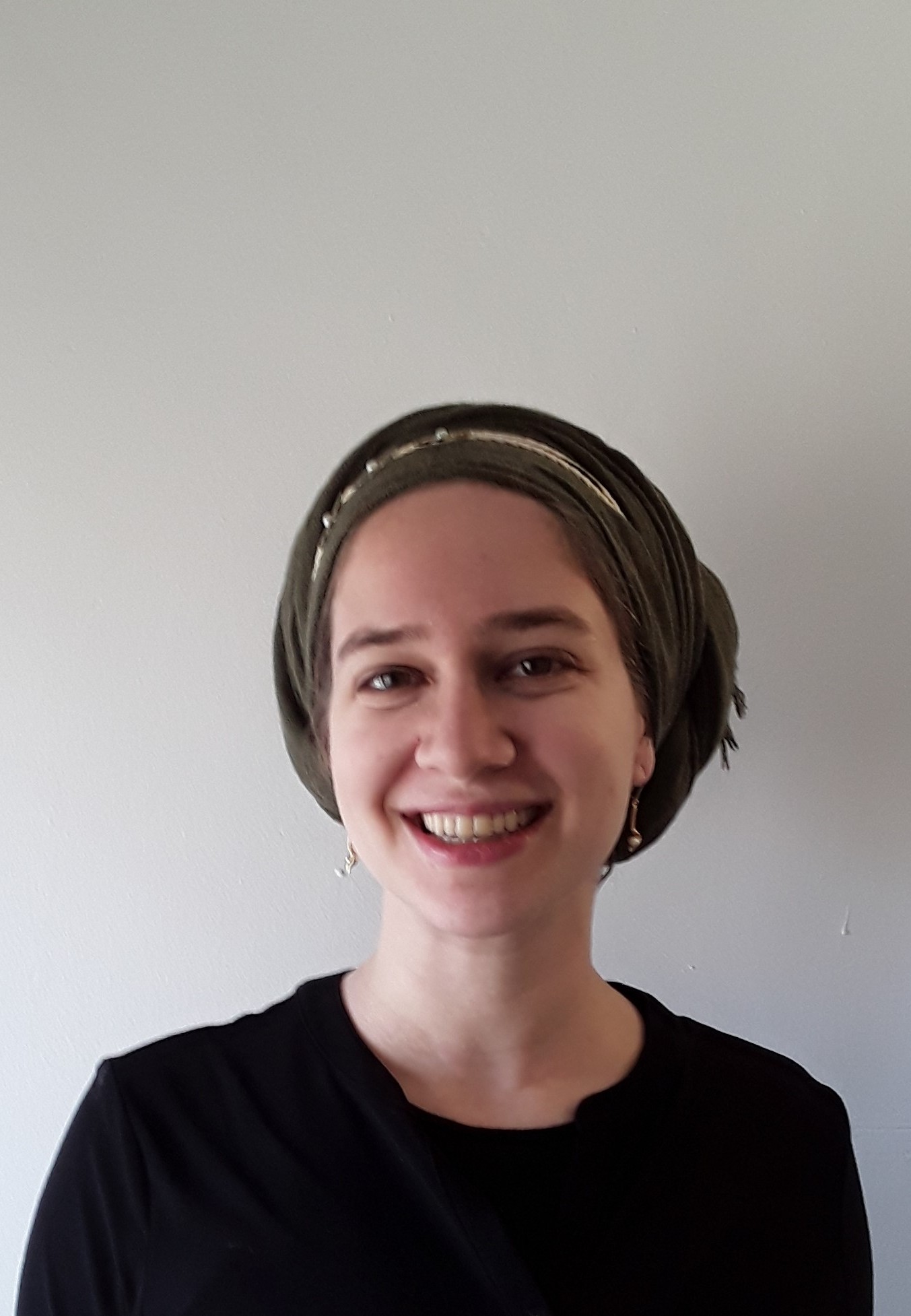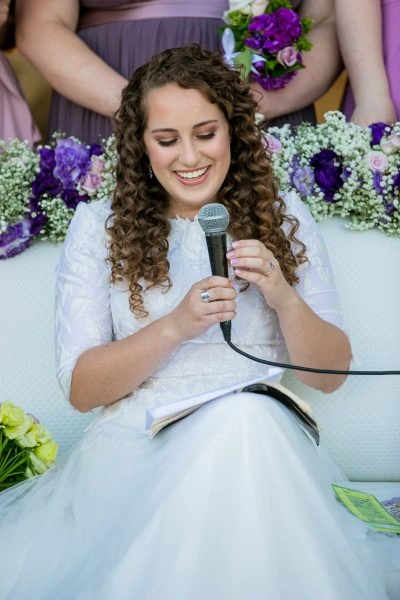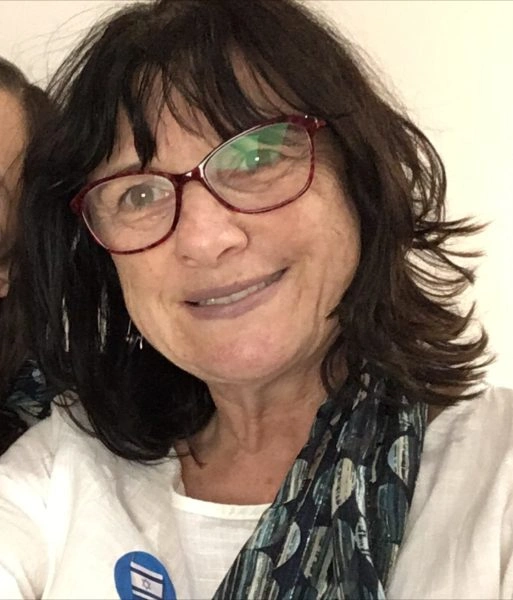If one threw an object from a public domain to a pole in a private domain, even if the pole is very tall, one is obligated for passing from a public to a private domain. Does this match Rebbi’s opinion regarding one who throw an item onto a protrusion? Abaye says they are not the same as the details of the case are different and the debate between Rebbi and the rabbis is on a different topic. Abaye brings a case where one throws a rounded basket from a private domain to a public domain. Does it depend on the size? Upon what else does it depend? Does it matter if it is thrown right size up or upside down (because of laws of levud)? How does one calculate the 4×4 width in a circular item? Ulla brings a case of a pole nine tefachim tall and says that since people use it to readjust their loads, it is considered public space. Would the same be true for a hole nine tefachim deep? There is a disagreement. Rava thinks it is not the same as using a hole to store things is not so convenient. Several questions are brought against Rava. What is the law regarding a threshold – does it depend on its size?
This week’s learning is sponsored by Caroline Bollag l’ilui nishmat Pinchas ben Menashe Peyser.
Want to dedicate learning? Get started here:


Today’s daily daf tools:
This week’s learning is sponsored by Caroline Bollag l’ilui nishmat Pinchas ben Menashe Peyser.
Today’s daily daf tools:
Delve Deeper
Broaden your understanding of the topics on this daf with classes and podcasts from top women Talmud scholars.
New to Talmud?
Check out our resources designed to help you navigate a page of Talmud – and study at the pace, level and style that fits you.
The Hadran Women’s Tapestry
Meet the diverse women learning Gemara at Hadran and hear their stories.
Shabbat 8
אָמַר אַבָּיֵי: בִּרְשׁוּת הַיָּחִיד דְּכוּלֵּי עָלְמָא לָא פְּלִיגִי כִּדְרַב חִסְדָּא, אֶלָּא הָכָא — בְּאִילָן הָעוֹמֵד בִּרְשׁוּת הַיָּחִיד וְנוֹפוֹ נוֹטֶה לִרְשׁוּת הָרַבִּים, וְזָרַק וְנָח אַנּוֹפוֹ, דְּרַבִּי סָבַר אָמְרִינַן ״שְׁדִי נוֹפוֹ בָּתַר עִיקָּרוֹ״. וְרַבָּנַן סָבְרִי לָא אָמְרִינַן ״שְׁדִי נוֹפוֹ בָּתַר עִיקָּרוֹ״.
Regarding this assertion, Abaye said: In the private domain, everyone agrees that the halakha is in accordance with the opinion of Rav Ḥisda, i.e., that the private domain is considered one entity filled from the ground to the sky. However, here this baraita is referring to a special case involving a tree standing in the private domain and its boughs lean into the public domain, and one threw an object from the public domain and it rested upon the boughs of the tree. Rabbi Yehuda HaNasi holds that we say: Cast its boughs after its trunk. The tree’s branches are considered an extension of its trunk, therefore the entire tree is considered a private domain, and one who throws onto it is liable. And the Rabbis hold that we do not say: Cast its boughs after its trunk, and therefore the boughs themselves are not considered to be a private domain, but rather an exempt domain, and one who throws atop them from the public domain is not liable.
אָמַר אַבָּיֵי: זָרַק כַּוֶּורֶת לִרְשׁוּת הָרַבִּים, גְּבוֹהָה עֲשָׂרָה וְאֵינָהּ רְחָבָה שִׁשָּׁה — חַיָּיב. רְחָבָה שִׁשָּׁה — פָּטוּר.
Abaye said: One who threw a round reed barrel into the public domain, and the barrel is ten handbreadths high and its diameter is not six handbreadths wide, is liable. Since its diameter is less than six handbreadths, its area can fit the area of four handbreadths squared. Therefore, this barrel is considered an object, and if he threw it from the private domain to the public domain he is liable. However, if the diameter of the barrel was six handbreadths wide, he is exempt. Since the area of the barrel is greater than the area of four handbreadths squared, it is considered an independent private domain, and he did not perform an act of throwing an object from one domain to another domain.
רָבָא אָמַר: אֲפִילּוּ אֵינָהּ רְחָבָה שִׁשָּׁה — פָּטוּר. מַאי טַעְמָא? — אִי אֶפְשָׁר לִקְרוּמִיּוֹת שֶׁל קָנֶה שֶׁלֹּא יַעֲלוּ לְמַעְלָה מֵעֲשָׂרָה.
Rava said: Even if it was not six handbreadths wide he is exempt. What is the reason for this? He is exempt because it is impossible that the ends of the reeds protruding from the weave of the barrel will not extend above ten handbreadths. Consequently, the entire barrel never entered the public domain, as part of it remains in a non-liable place, i.e., ten handbreadths off the ground of the public domain.
כְּפָאָהּ עַל פִּיהָ, שִׁבְעָה וּמַשֶּׁהוּ — חַיָּיב. שִׁבְעָה וּמֶחֱצָה — פָּטוּר.
If he turned the barrel that is less than six handbreadths wide over on its mouth, i.e., if he threw it with its mouth facing down, even if the barrel was only seven handbreadths and a bit high, he is still liable, as the legal status of this barrel is equivalent to that of any other object that lands there. However, if the height of this barrel was seven and a half handbreadths, he is exempt. Within three handbreadths of the ground, the principle of lavud takes effect: An object within three handbreadths of the ground has the legal status of being connected to the ground. The sides of the barrel extend to the ground and then it is considered as if the barrel already touched the ground of the public domain, even though it is actually still three handbreadths away, while its upper part remains an exempt domain. It is as if this was a barrel higher than ten handbreadths.
רַב אָשֵׁי אָמַר: אֲפִילּוּ שִׁבְעָה וּמֶחֱצָה — חַיָּיב. מַאי טַעְמָא? — מְחִיצּוֹת לְתוֹכָן עֲשׂוּיוֹת.
Rav Ashi said: Even if the height of the barrel was seven and a half handbreadths, he is liable, as the sides of the barrel are not considered to be higher than they are in reality. What is the reason for this? The reason is because partitions are made exclusively for the inside of the barrel. The sides of the barrel play no role beyond the barrel itself, and therefore there is no room to extend the sides by means of the principle of lavud. Therefore, if the barrel itself is not higher than ten handbreadths, it is merely an object.
אָמַר עוּלָּא: עַמּוּד תִּשְׁעָה בִּרְשׁוּת הָרַבִּים וְרַבִּים מְכַתְּפִין עָלָיו, וְזָרַק וְנָח עַל גַּבָּיו — חַיָּיב. מַאי טַעְמָא? — פָּחוֹת מִשְּׁלֹשָׁה מִדְרָס דָּרְסִי לֵיהּ רַבִּים. מִשְּׁלֹשָׁה וְעַד תִּשְׁעָה — לָא מִדְרָס דָּרְסִי לֵיהּ וְלָא כַּתּוֹפֵי מְכַתְּפִי. תִּשְׁעָה וַדַּאי מְכַתְּפִין עִילָּוֵיהּ.
Ulla said: A pillar that is nine handbreadths high, standing in the public domain, and many people adjust the burden on their shoulders upon it, and one threw an object from the private domain and it rested atop the pillar, he is liable. What is the reason for this? It is based on this principle: Anything protruding from the public domain: If it is less than three handbreadths off the ground, and the multitudes step on it, it is considered to be part of the ground. If it is from three to nine handbreadths, they, the multitudes, neither step on it nor adjust the burden on their shoulders on it, and it is not considered part of the public domain. However, a protrusion nine handbreadths high, certainly the multitudes adjust the burden on their shoulders on it. Since the multitudes utilize it, it is considered a public domain, despite its height.
אֲמַר לֵיהּ אַבָּיֵי לְרַב יוֹסֵף: גּוּמָּא מַאי? אֲמַר לֵיהּ: וְכֵן בְּגוּמָּא. רָבָא אָמַר: בְּגוּמָּא לָא. מַאי טַעְמָא? — תַּשְׁמִישׁ עַל יְדֵי הַדְּחָק לָא שְׁמֵיהּ תַּשְׁמִישׁ.
Based on Ulla’s statement, Abaye said to Rav Yosef: A hole in the ground of the public domain, which is several handbreadths deep, what is its legal status? Is it also considered, in accordance with Ulla’s principle, part of the public domain? In general, with regard to the halakhot of Shabbat, there is no distinction between an area elevated above its surroundings and an area depressed below its surroundings. Rav Yosef said to him: And the same is true in a hole; these halakhot apply. Rava said: In a hole, these halakhot do not apply. What is the reason for this? Since use under duress is not considered use, and the use of a pit even if it is nine handbreadths deep is inconvenient, and it is not comparable to a pillar of the same height.
אֵיתִיבֵיהּ רַב אַדָּא בַּר מַתְנָא לְרָבָא: הָיְתָה קוּפָּתוֹ מוּנַּחַת בִּרְשׁוּת הָרַבִּים גְּבוֹהָה עֲשָׂרָה וּרְחָבָה אַרְבָּעָה — אֵין מְטַלְטְלִין לֹא מִתּוֹכָהּ לִרְשׁוּת הָרַבִּים וְלֹא מֵרְשׁוּת הָרַבִּים לְתוֹכָהּ. פָּחוֹת מִכֵּן — מְטַלְטְלִין. וְכֵן בְּגוּמָּא. מַאי לָאו אַסֵּיפָא: לָא, אַרֵישָׁא.
Rav Adda bar Mattana raised an objection to Rava’s opinion from that which was taught in a baraita: One whose basket was placed in the public domain and it was ten handbreadths high and four wide, one may neither move an object from it to the public domain nor from the public domain to it, since its legal status is that of a private domain. If it were less than that height, one may carry from it to the public domain and vice versa. The baraita adds: And the same is true for a hole. Is this statement not referring to the latter clause of the baraita: One may carry from a pit which is less than ten handbreadths deep to the public domain? This supports the opinion of Rav Yosef, that a hole is subsumed within the public domain. Rava rejected this: This statement is not referring to the latter clause of the baraita, but rather to the first clause of the baraita: It is like a basket in that one may not carry from a hole ten handbreadths deep to the public domain because it is a full-fledged private domain. However, no conclusion may be drawn with regard to a hole less than ten handbreadths deep.
אֵיתִיבֵיהּ:
Rav Adda bar Mattana raised another objection to Rava’s opinion from what was taught in a different baraita, which deals with the laws of joining of borders:
נִתְכַּוֵּון לִשְׁבּוֹת בִּרְשׁוּת הָרַבִּים, וְהִנִּיחַ עֵירוּבוֹ בְּבוֹר לְמַעְלָה מֵעֲשָׂרָה טְפָחִים — עֵירוּבוֹ עֵירוּב. לְמַטָּה מֵעֲשָׂרָה טְפָחִים — אֵין עֵירוּבוֹ עֵירוּב.
One who intended to establish his Shabbat abode in the public domain at a specific site must place food sufficient for two meals for that site to be considered his legal residence. And if he placed the food used for his eiruv in a pit above ten handbreadths, i.e., less than ten handbreadths below ground level, his eiruv is an eiruv. If he placed the eiruv below ten handbreadths from ground level, his eiruv is not an eiruv. Because the pit is a private domain and he may not carry the eiruv from that private domain to a public domain, where he has established his residence, the eiruv is invalid.
הֵיכִי דָּמֵי? אִילֵּימָא בְּבוֹר דְּאִית בֵּיהּ עֲשָׂרָה, וּ״לְמַעְלָה״ — דְּדַלִּאי וְאוֹתְבֵיהּ, וּ״לְמַטָּה״ דְּתַתִּאי וְאוֹתְבֵיהּ, מָה לִי לְמַעְלָה וּמָה לִי לְמַטָּה. הוּא בְּמָקוֹם אֶחָד, וְעֵירוּבוֹ בְּמָקוֹם אַחֵר הוּא.
The Gemara seeks to clarify the details of this case. What are the exact circumstances? If you say that the baraita is referring to a pit that has ten handbreadths in depth and the phrase: And he placed it above ten handbreadths, means that he raised the eiruv and placed it within ten handbreadths of ground level, and the phrase: Below ten handbreadths, means that he lowered the eiruv and placed it ten handbreadths or more below ground level, what difference does it make to me if the eiruv is above ten handbreadths and what difference does it make to me if it is below ten handbreadths? In any case, the pit is a private domain, and the principle states that the private domain extends from its lowest point to the sky. There is no difference whether the eiruv was placed higher or lower. In any case, he is in one place, in the public domain, and his eiruv is in another place, in the private domain. Since he cannot take the eiruv out of the pit, his eiruv is not an eiruv.
אֶלָּא לָאו בְּבוֹר דְּלֵית בֵּיהּ עֲשָׂרָה, וְקָתָנֵי עֵירוּבוֹ עֵירוּב. אַלְמָא תַּשְׁמִישׁ עַל יְדֵי הַדְּחָק שְׁמֵיהּ תַּשְׁמִישׁ.
Rather, is the baraita not referring to a pit that does not have in it a depth of ten handbreadths? And the baraita should be understood as follows: If he placed his eiruv below ten handbreadths, refers to a pit whose lowest point is ten handbreadths or more below ground level. If he placed his eiruv above ten handbreadths, refers to a pit that is less than ten handbreadths deep and is not a private domain. And, with regard to that case, it was taught that his eiruv is an eiruv. Consequently, usage under duress in a pit that is less than ten handbreadths deep is considered usage, and a pit of that kind is a full-fledged part of the public domain.
זִמְנִין מְשַׁנֵּי לֵיהּ הוּא וְעֵירוּבוֹ בְּכַרְמְלִית, וְאַמַּאי קָרֵי לַהּ ״רְשׁוּת הָרַבִּים״ — לְפִי שֶׁאֵינָהּ רְשׁוּת הַיָּחִיד.
Rava suggested various responses to this objection. At times he would answer him that it is referring to a case where both he and his eiruv are in a karmelit, i.e., that he intended to establish residence in a karmelit and placed his eiruv there. The pit is less than ten handbreadths deep, and consequently, both he and his eiruv are in the same domain. And why does the baraita call his place of residence the public domain? Because it is not the private domain.
וְזִמְנִין מְשַׁנֵּי לֵיהּ, הוּא בִּרְשׁוּת הָרַבִּים וְעֵירוּבוֹ בְּכַרְמְלִית. וְרַבִּי הִיא, דְּאָמַר כׇּל דָּבָר שֶׁהוּא מִשּׁוּם שְׁבוּת, לֹא גָּזְרוּ עָלָיו בֵּין הַשְּׁמָשׁוֹת.
And at times he would answer him that it is referring to a case where he was, indeed, in the public domain and his eiruv was in a karmelit, as a pit that is not ten handbreadths deep is not part of the public domain, rather it is a karmelit. With regard to the question, how can this be considered a legitimate eiruv as it is forbidden to carry from a karmelit to a public domain as well, this baraita is in accordance with the opinion of Rabbi Yehuda HaNasi, who said: Anything that is prohibited on Shabbat and its prohibition is not by Torah law, rather it is due to a rabbinic decree [shevut], the Sages did not issue the decree to apply during twilight, which is neither definitive day nor definitive night. Consequently, at the time that the eiruv was placed in the karmelit it was permissible for him to carry it to the public domain. Since an eiruv takes effect even if it is fit for use just one moment during twilight on Shabbat eve, his eiruv is effective.
וְלָא תֵּימָא דַּחוֹיֵי קָא מְדַחֵינָא לָךְ, אֶלָּא דַּוְקָא קָאָמֵינָא לָךְ. דִּתְנַן: אִם הָיָה רְקָק מַיִם וּרְשׁוּת הָרַבִּים מְהַלֶּכֶת בּוֹ, הַזּוֹרֵק לְתוֹכָהּ אַרְבַּע אַמּוֹת — חַיָּיב. וְכַמָּה הוּא רְקָק מַיִם — פָּחוֹת מֵעֲשָׂרָה טְפָחִים. וּרְקָק מַיִם שֶׁרְשׁוּת הָרַבִּים מְהַלֶּכֶת בּוֹ, הַזּוֹרֵק לְתוֹכוֹ אַרְבַּע אַמּוֹת — חַיָּיב.
And Rava said to Rav Adda bar Mattana: Do not say that I am just putting you off with these answers. Rather, what I am saying to you is accurate. The opinion that usage under duress is not considered usage is a bona fide opinion and the suggested answers are appropriate explanations of that baraita. As we learned in a mishna: If there was a swamp and the public domain passes through it, one who throws an object into it at a distance of four cubits is liable just like anyone who carried four cubits in the public domain. And how deep is this swamp? It is less than ten handbreadths. The mishna adds: And with regard to a swamp that the public domain passes through it, one who throws four cubits into the swamp is liable.
בִּשְׁלָמָא ״רְקָק״ ״רְקָק״ תְּרֵי זִימְנֵי, חַד בְּימוֹת הַחַמָּה וְחַד בִּימוֹת הַגְּשָׁמִים. וּצְרִיכָא, דְּאִי אַשְׁמְעִינַן בְּימוֹת הַחַמָּה, דַּעֲבִידִי אִינָשֵׁי לְקָרוֹרֵי נַפְשַׁיְהוּ, אֲבָל בִּימוֹת הַגְּשָׁמִים — אֵימָא לָא. וְאִי אַשְׁמְעִינַן בִּימוֹת הַגְּשָׁמִים, אַגַּב דְּמִטְּנִיף מִקְּרֵי וְנָחֵית, אֲבָל בִּימוֹת הַחַמָּה — לָא. צְרִיכָא.
The difficulty concerning the repetition of the same topic with virtually identical words is clear, and therefore: Granted, it is possible to explain, that swamp swamp was repeated twice; one case is referring to the summer, and one case is referring to the rainy season. And it is necessary to emphasize that this ruling is in effect both in the summer and in the winter. As, had the mishna told us this halakha only in the summer, we would have said that since people commonly pass through the swamp to cool themselves, it is considered part of the public domain. However, in the rainy season I would have said it is not part of the public domain. And conversely, had the mishna told us this halakha only in the rainy season, I would have said that since he is filthy anyway, it happens that he is not cautious and enters into the swamp. However, in the summer, when he is not dirty with mud, I would have said that it is not part of the public domain. Therefore, it was necessary for the mishna to repeat swamp twice, to teach us that this halakha applies at all times.
אֶלָּא הִילּוּךְ תְּרֵי זִימְנֵי לְמָה לִי? אֶלָּא לָאו שְׁמַע מִינַּהּ הִילּוּךְ עַל יְדֵי הַדְּחָק — שְׁמֵיהּ הִילּוּךְ, תַּשְׁמִישׁ עַל יְדֵי הַדְּחָק — לָא שְׁמֵיהּ תַּשְׁמִישׁ. שְׁמַע מִינַּהּ.
However, why do I need the mishna to state twice that the public domain passes through that swamp? Rather, shouldn’t one conclude from this that passage, even when it is under duress, and not free and easy, is considered passage, but usage under duress is not considered usage? It was necessary to emphasize that the public domain actually passes through it. If the multitudes do not pass through it and it was only used under duress, it would not have been considered a public domain. The Gemara concludes: Indeed conclude from this.
אָמַר רַב יְהוּדָה: הַאי זִירְזָא דְּקָנֵי, רְמָא וְזַקְפֵיהּ רְמָא וְזַקְפֵיהּ — לָא מִיחַיַּיב עַד דְּעָקַר לֵיהּ.
Somewhat related to the case of the barrel discussed earlier which was a case of moving an object without liability, the Gemara cites that Rav Yehuda said: That bundle of reeds that he stood upright and threw down, stood upright and threw down repeatedly, he is not liable for carrying it four cubits in the public domain until he lifts it off the ground. As long as he did not lift it from the ground, even though he moved it a long way, he did not perform the acts of lifting and placing which are prohibited by Torah law, as at least one part of the bundle always remained on the ground.
אָמַר מָר: אָדָם עוֹמֵד עַל הָאִסְקוּפָּה, נוֹטֵל מִבַּעַל הַבַּיִת וְנוֹתֵן לוֹ, נוֹטֵל מֵעָנִי וְנוֹתֵן לוֹ. הַאי אִסְקוּפָּה מַאי?
The Master said: A person standing on the threshold may take an object from the homeowner standing in the private domain and may give an object to him. Similarly, while standing there, he may take an object from a poor person standing in the public domain and may give an object to him because there is no element of prohibition or liability in carrying in and carrying out in an exempt domain on Shabbat. The Gemara asks: This threshold, what is it; to what type of threshold is it referring? Different thresholds have different halakhic status.
אִילֵּימָא אִסְקוּפַּת רְשׁוּת הָרַבִּים — נוֹטֵל מִבַּעַל הַבַּיִת? הָא מַפֵּיק מֵרְשׁוּת הַיָּחִיד לִרְשׁוּת הָרַבִּים!
If you say that it is referring to a threshold that is the public domain, i.e., the threshold of an alleyway that is fewer than three handbreadths off the ground and is not covered, and the post that demarcates the parameters of the alleyway is situated between the public domain and the alleyway, how can the Tosefta say that he may take an object from the homeowner? Isn’t he carrying out from the private domain to the public domain?
וְאֶלָּא אִסְקוּפַּת רְשׁוּת הַיָּחִיד — נוֹטֵל מִן הֶעָנִי? הָא קָא מְעַיֵּיל מֵרְשׁוּת הָרַבִּים לִרְשׁוּת הַיָּחִיד!
Rather, say that the Tosefta is referring to a threshold that is the private domain, in a case where it is covered, or it is situated between the post that demarcates the parameters of the alleyway and the private domain, or it is ten handbreadths high and its area is at least four by four handbreadths. How then can the Tosefta say that he may take an object from a poor person? Isn’t he carrying in from the public domain to the private domain?
אֶלָּא אִסְקוּפַּת כַּרְמְלִית — נוֹטֵל וְנוֹתֵן לְכַתְּחִלָּה, סוֹף סוֹף אִיסּוּרָא מִיהָא אִיתָא!
Rather, say that the Tosefta is referring to a threshold that is a karmelit, i.e., it is not ten handbreadths high and it is four by four handbreadths; how can the Tosefta say that he may take and give even ab initio? Ultimately, in this case, there is nevertheless a prohibition. Even though a karmelit does not engender liability by Torah law, carrying from it is prohibited by rabbinic law and is certainly not permitted ab initio.
אֶלָּא אִסְקוּפָּה מְקוֹם פָּטוּר בְּעָלְמָא הוּא — כְּגוֹן דְּלֵית בֵּיהּ אַרְבָּעָה עַל אַרְבָּעָה. וְכִי הָא דְּכִי אֲתָא רַב דִּימִי אָמַר רַבִּי יוֹחָנָן: מָקוֹם שֶׁאֵין בּוֹ אַרְבָּעָה עַל אַרְבָּעָה טְפָחִים — מוּתָּר לִבְנֵי רְשׁוּת הַיָּחִיד וְלִבְנֵי רְשׁוּת הָרַבִּים לְכַתֵּף עָלָיו, וּבִלְבַד שֶׁלֹּא יַחֲלִיפוּ.
Rather, say that the Tosefta is referring to a threshold that is merely an exempt domain, and therefore there is no prohibition at all. In what circumstances is it an exempt domain? In a case where it does not have an area of four by four handbreadths, and it is therefore not considered a domain with regard to liability on Shabbat. And that halakha is similar to that statement made when Rav Dimi came from Eretz Yisrael to Babylonia and he said that Rabbi Yoḥanan said: A place that does not have an area of four by four handbreadths and is set apart, it is permissible for both the people of the private domain and for the people of the public domain to adjust the burden on their shoulders upon it on Shabbat, as long as they do not exchange objects between them from one domain to the other domain.
אָמַר מָר, וּבִלְבַד שֶׁלֹּא יִטּוֹל מִבַּעַל הַבַּיִת וְנוֹתֵן לְעָנִי, מֵעָנִי וְנוֹתֵן לְבַעַל הַבַּיִת. וְאִם נָטַל וְנָתַן — שְׁלָשְׁתָּן פְּטוּרִין. לֵימָא תֶּיהְוֵי תְּיוּבְתָּא דְרָבָא. דְּאָמַר רָבָא: הַמַּעֲבִיר חֵפֶץ מִתְּחִילַּת אַרְבַּע לְסוֹף אַרְבַּע בִּרְשׁוּת הָרַבִּים — אַף עַל פִּי שֶׁהֶעֱבִירוֹ
The Master also said in the Tosefta: A person standing on the threshold may take an object from the homeowner and give an object to him, and he may take an object from the poor person or give an object to him, as long as he does not take the object from the homeowner and give it to a poor person or from a poor person and give it to the homeowner. And, however, if he took an object from one and gave it to the other, certainly no labor prohibited by Torah law was performed in that case, and all three of them are exempt. The Gemara asks: Say that this will be a conclusive refutation of Rava’s opinion, as Rava said: One who transfers an object from the beginning of four cubits to the end of four cubits in the public domain, even though he transferred it above the upper boundary of the public domain





















